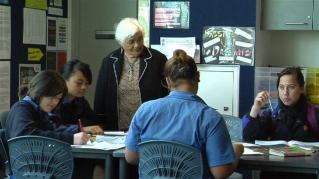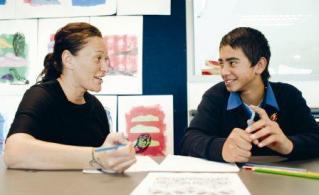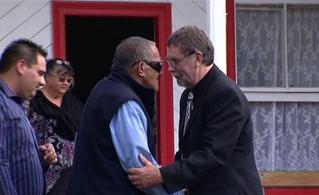Transcript
Narration
Diagnostic information should be obtained from a wide range of sources. The close analysis of curriculum data is critical to informing teaching and learning decisions. At Waipa School, tightly focussed curriculum delivery follows close examination of student data.
Annette McGowan – Deputy Principal Waipa School
When we first began our running records, we discovered we were looking only at decoding, we weren't delving enough into the comprehension side. That led us to finding a new way, or an improved way, of taking and analysing our running records. What did come up from that was: the decoding was fine, the comprehension was very poor. So we had to say to ourselves, “So why is this comprehension so poor? Is it because we are not teaching the skills for comprehension?”.
Alison Davis - Literary Consultant
We are focussing in particular on literacy because we identified literacy as an area that children were underachieving in. So we really pushed forward on two fronts right from the beginning. The first was for guided reading and the second was formative assessment. Once teachers became really comfortable with this, the students responded really really well. And we had in front of us a group of students who, for some of them, for the first time ever in their school careers, they actually really clearly understood the specific purpose of each lesson.
Emotional engagement is feeling positive about themselves, and feeling positive about their ability to succeed. Social engagement is students starting to work together – social problem solving, collaboration, cooperation. And when we share the outcomes with students, and when they are involved in developing the success criteria, they are also being set up quite effectively to be able to self- and peer-assess their own learning.
Narration
Student involvement in the assessment process, and the setting of learning goals, impacts positively on student motivation and their desire to do better.
At Pakaraka Primary, teachers and learners share responsibility for how they can improve learning outcomes.
Jane Lindsay – Teacher Pararaka School
Part way through the year I administered a reading Asttle test and the results were not very good at all.
So we looked through the test and the children discovered, after looking at their test and doing some self assessment, that what they had done was not read the questions correctly. And that significantly affected their results. And when they discovered that, the children wanted to sit that test again straight away. And also, it identified the fact that our....their reading comprehension needed some work. And so I built that into our reading group programme, I explained that was what we were going to do; so in our daily reading group programme they knew that they were going to come and work on their comprehension skills. And they wanted to because they knew that was going to improve their results.
Professor John Hattie – University of Auckland
Teachers who are passionate – they can make the difference - tend to make the difference more often. Those who see it as a very routine job, those who see it as their job to structure the classroom so that things happen in the right order; those who see it in terms of my job is to try and break this material down to make it as easy as possible for the kids to learn, aren't as successful. You've got to have that sense of challenge in the classroom, and if the kids see the teachers are challenged, then the kids enjoy that challenge as well.





